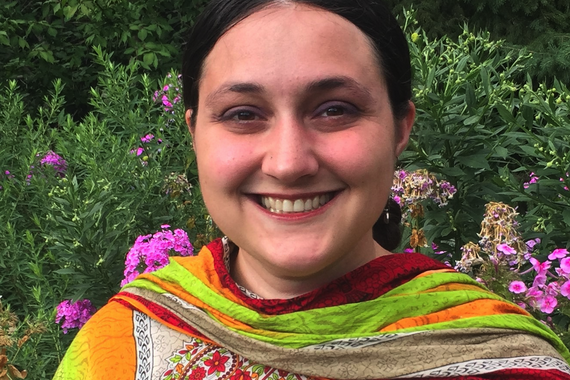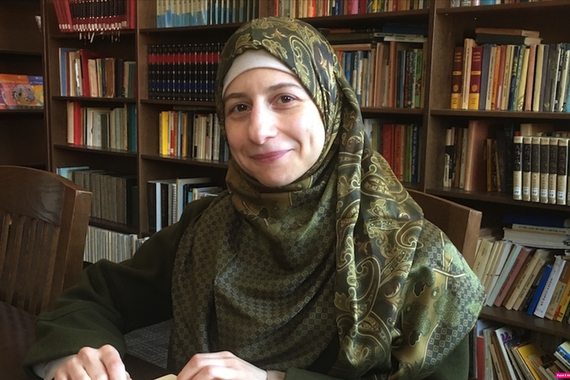A New Approach to Teaching French
Introduction to French (FREN 1001) has recently undergone a huge change, featuring a new textbook and an entirely new approach to the course. The minds behind this redesign are Lauren Goodspeed, Director of French Language Instruction, and Ashlie Henery, Course Coordinator for first-year French.
Both Goodspeed and Henery—who also teach as lecturers—were drawn to the University of Minnesota for its Center for Advanced Research on Language Acquisition. While structuring a new beginner French course, they relied on related research to make it as approachable and engaging as possible.
The redesigned course was developed around the four main objectives of the French program, which are for students to become effective multilingual communicators, cross-cultural navigators, reflective and critical thinkers, and lifelong learners. Each activity in the course is designed to build on one or more of these goals.
Exploring the Francophone World
Since culture plays a huge role in the way the language is used, Goodspeed and Henery want to present students with a wider scope of the French-speaking world, using a variety of texts from French speakers not only from France, but also Africa, Canada, and Louisiana.
“The content allows us to explore questions of identity, values, and privilege,” Henery comments. It also opens up a wider space for students to ask questions and share their knowledge and experiences. “We often talk about wanting to meet students where they're at intellectually, and students are really interested in these sorts of questions.”
The listening log is another culture-based assignment, in which students engage with a piece of French-language media they found on their own and reflect upon the listening experience. Henery and Goodspeed remark that it’s been fun to see the variety of topics students have selected, whether it be a sports game, beauty blog, or podcast.
“Reflection is a really strong component of the whole curriculum,” Goodspeed explains. “And I think part of that is just to help students make sense of their own learning…So we have a lot of checkpoints where students are reflecting upon things like, ‘Okay, what did I actually learn? What am I struggling with? What am I getting? What does this mean for me?’”
Mixing Up the Final Assessment
Goodspeed and Henery had the previous course structure and updated textbook to build off of when reworking the course, but one of the aspects they developed entirely from scratch was the final assessment. Instead of an exam, the course ends with a mixer event, combining FREN 1001 students from all seven sections of the course to surround them with new faces. Students then go around introducing themselves and try holding a few minutes of a conversation using as much French as possible.
This idea for a mixer formed during the pandemic when Goodspeed and Henery realized that standard exams may not be the best way to test students’ use of language. They reconsidered the objectives of the course and decided to place more emphasis on realistic language use, such as small talk. As Henery describes it, the course is “preparing you for a dinner party where you don't know people.”
An important part of the mixer’s design is that students are not graded on their performance. Most of the points go into their preparation before the event and their reflection after, leaving them stress-free to meet and interact with each other.
“[It’s] a really nice way to put a bow on everything at the end of the semester. I think that it really helps make visible to students their learning and their ability to communicate with other people,” Goodspeed comments.
The mixer—which was piloted last year—was a huge success, earning the Excellence in Language Program Direction Award by the American Association of University Supervisors and Coordinators (AAUSC). The organization is made up of individuals doing similar work to Goodspeed and Henery all across the country, so to receive this award is especially meaningful for them.
“It’s a very big honor for our peers to look at our work and recognize it for being innovative,” Henery expresses in regard to the award.
Goodspeed agrees. “These people who are in this organization are just extremely dedicated professionals, extremely intelligent, extremely creative. And so for me, it just adds to the honor of being recognized for what we're doing.”
The Ideal Curriculum
The chance to transform a course doesn’t come very often, so both Henery and Goodspeed are grateful for this experience.
“We really took the opportunity when we were redesigning this curriculum to say: Based on second language acquisition research and our own pedagogical perspectives, what is our ideal curriculum? Because it's very, very rare to get the chance to start from scratch in designing a multi-section, multi-semester curriculum,” Henery says.
Having renovated the first year of introductory French, which spans the first and second semesters and the accelerated beginner course, Henery and Goodspeed are happy with how the redesigned courses are going so far, but are still on the lookout for adjustments as time progresses.
Goodspeed is also looking at the bigger picture, planning a full review of the French program with attention to diversity, equity, and inclusivity. She is currently working with second-year coordinator Marina Calas on redesigning and implementing a new curriculum in second-year French, using a similar approach to the first year, with the new third-semester French (FREN 1003) currently being piloted.
“It's been such a fun experience being able to see it all come into fruition,” Goodspeed shares. “Interacting with students who are doing all of these things that we've designed is very cool.”

